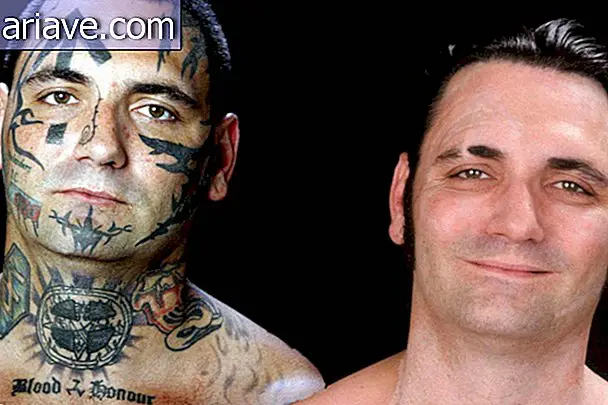The history and evolution of headphones
Have you ever wondered how much headphones have evolved over the years? After all, we are talking about a business that a lot of people spend all day using and, if you doubt, yourself, dear reader, have one now! Because they changed a lot of format and even function until they reach the mold of today. Check out:
The types and formats
Before telling the story, let's make it very clear what are the types and shapes of headphones. There are the traditional circumaural, or over-ear, which are those big earbuds that cover the entire ear, have comfortable ear cushions and often better isolate sound. There are also the supra-aural, or on-ear, that are over the ear but not completely covered.

The in-ear ones are what we most commonly call the same headphones. They are the miniature versions, positioned closest to the ear canal. And they are divided into earbuds, the most common, and the in-ear, or in-ear, ones that really get in the ear to ensure better quality and isolation.
Still far from ideal
The earliest records of the use of hearing aids in the ear are medical, in the case of stethoscopes, which have been around since 1850. They worked so well that the legendary Thomas Edison wore a very similar device to his phonograph.

Until, in 1881, listening to music gained a new meaning. The Théâtrophone, in Paris, was a service only for the rich, where you listened to operas or plays via telephone. Nine years later, a similar service, called Electrophone, started operating in the UK and even spread the word. All that was needed was a device more suitable for all this.
The pioneers
It was in 1891 that the French engineer Ernest Mercadier registered the patent for the bi-telephone. This device was very similar to today's earphones; it had a rubber cover for comfort and only worked for calls - so much so that it used parts from the telephone receivers.

In 1910, the first pair of headphones was born, in a format very similar to what we see today. The person in charge was Nathaniel Baldwin, who made everything in the home kitchen.

He sent a letter with a prototype to the United States Navy, and the military didn't even care about it at first, but later saw that it was far superior to any communication equipment.
The big brands
The first well-defined earpiece to hit the market was the 1937 German Beyerdynamic DT-48, which evolved and continued to be produced until 2012. They were also the first dynamic models, one of the main catalogs of a headset.

Dynamic means that the headset works like miniature speakers, with the electrical signal passing through the wire and turning an acoustic vibration in the cone-shaped diaphragm until it is picked up by the ear. Another brand that started to make its name at that time was the AKG, with the model K120 in 1947.

The next big revolution came in 58. American jazz musician John Koss wanted to make a portable hospital phonograph along with a listening accessory, but decided to release such a separate handset because it received so much praise. The result? He invented the first stereo headset in history, the Koss SP-3. In addition to the new technology, it was made especially for listening to music, in this case vinyl records. Design influences models even today.
The 1968 model, the Koss ESP / 6, was the first electrostatic headphone, which is the other classification besides the dynamic one. It has less distortion and often appears on higher quality but more expensive models.

Koss Corporation has been the strongest name in the headset market for at least 10 years. And they enjoyed fame with items like the Beatlephones, which were Beatles themed headphones, at the time the absolute rock band in popularity.
This was a very important moment for the market, because record players and other audio devices of the time began to get cheaper, and more homes also wanted headphones to make less noise or enjoy closely.

In the late 1970s, the industry became less heated, and Koss entered a brief crisis, not before launching the classic HV line. Sennheiser was the one who tried to get this post, which in 1968 introduced the HD 414 model. It had a different design from Koss and was open, ie with the speakers exposed at the rear. The sound in them was more airy and natural, and the German Sennheiser remains firm and strong to this day.
Total Immersion
In 1978, engineer and professor Amar Bose thought, during a plane trip, of a way to reduce the engine noise in the headphones and already landed with the idea formed in his head. His company, Bose, was already successful in other areas and revolutionized with noise-canceling headphones.

They have microphones on the outside that detect ambient noises and produce a sound at a frequency that cancels out those noises. Aircraft pilots and other noisy vehicles were the first to use the invention, and only the 2000 Bose QuietComfort brought the technology to the average consumer.
The portable revolution
Then we move to 1979. Sony, which once had the story told here, launched a small revolutionary device called the Walkman. With it you not only took your music anywhere, but listened to it privately. Sony was very smart and shipped with the player a pair of MDR-3L2 headphones, which exploded in popularity.

These were decades of some stagnation in innovations. Until 2001, when another revolution began, as big as that of the Walkman. It was the launch of the iPod and that Apple marketing campaign, with blank people and headphones and a colorful background. Digital music has become portable, and headphones have become more indispensable than ever.

The white Apple models were not even the most advanced of the time, but became a symbol along with the player.
The evolution of the beat
It seemed that the industry was stagnant, definite. Now, in 2006, rapper Dr. Dre and music producer Jimmy Iovine were dissatisfied with the quality of Apple's plastic phonographs, because it undermined such carefully crafted music work. The result would be a glamorous, quality and expensive brand. Beats was born, which in 2008 launched the first model, the Beats by Dr. Dre Studio.

The brand changed the market by betting on the support of musicians and even launching commemorative lines of artists. Wearing a Beats headphone has become more synonymous with status, with soccer players, actors, and so forth popping up with a huge Beats headset around his neck. It was majority-owned by HTC from 2010 to 2012, and two years later closed the loop with the irony of being bought precisely by Apple, the one it criticized earlier.
Because of this success, other brands with a similar style began to appear. You can name manufacturers like Skull Candy, Urbanears and WeSc. Telefunken, from the United States, which has had its story told here, also reappears in the more professional segment.

Apple continued to pursue innovations and launched two. The first was the 2012 EarPod, with a periscope shape and output that could be 3.5mm or Lightning. The second was a fashion that didn't start with Apple, but consolidated with it. It's the 2015 AirPods that are totally wireless, even between the two sides. A lot of people hated it, said it was easy to lose and all, but it did well in the market.
Diversity is everything
Nowadays, headphones usually come in the box with mobile phones, and other major brands in the market risk in the headphones market, such as Philips and Samsung. The sector is well populated, and you can't name everyone here.
And of course headphones are also essential today for the gaming world. Brands like Razer, Logitech, HyperX, ROG and many others specialize in gamer headsets. In addition to the eye-catching look and usually bright colors, these models cover the entire ear, are comfortable and value the immersive experience.
Today, you can still choose between wired or wireless headphones. The first ones are from the 60's, but they usually had a radio transmitter on one side, so they were kind of cheesy. Traditional models via Bluetooth only started coming out in 2004.
Some companies try to spot multi-channel models that simulate the feel of a home theater and those movie theaters that direct every noise. Another recent addition is bone conduction, a vibration wave induction technology that makes sound "come out" in your ear.
By the way, there are headphones so expensive today that they became luxury items. Tournaire's Focal Utopia has gold and diamond decoration and costs $ 120, 000. Already the most expensive without gems is the Sennheiser HE 1, which was launched for 55 thousand dollars.
The headset today is a more than diversified product. There are small models, in-ear headphones, headphones, headsets, gamer models, those of the highest quality for professional use, big brands and so on. You just have to pick your favorite and thank all these people for the evolutions that have taken this technology to where it is today.
***
Do you know the Mega Curioso newsletter? Weekly, we produce exclusive content for lovers of the biggest curiosities and bizarres of this big world! Register your email and do not miss this way to keep in touch!
The history and evolution of headphones [video] via TecMundo











